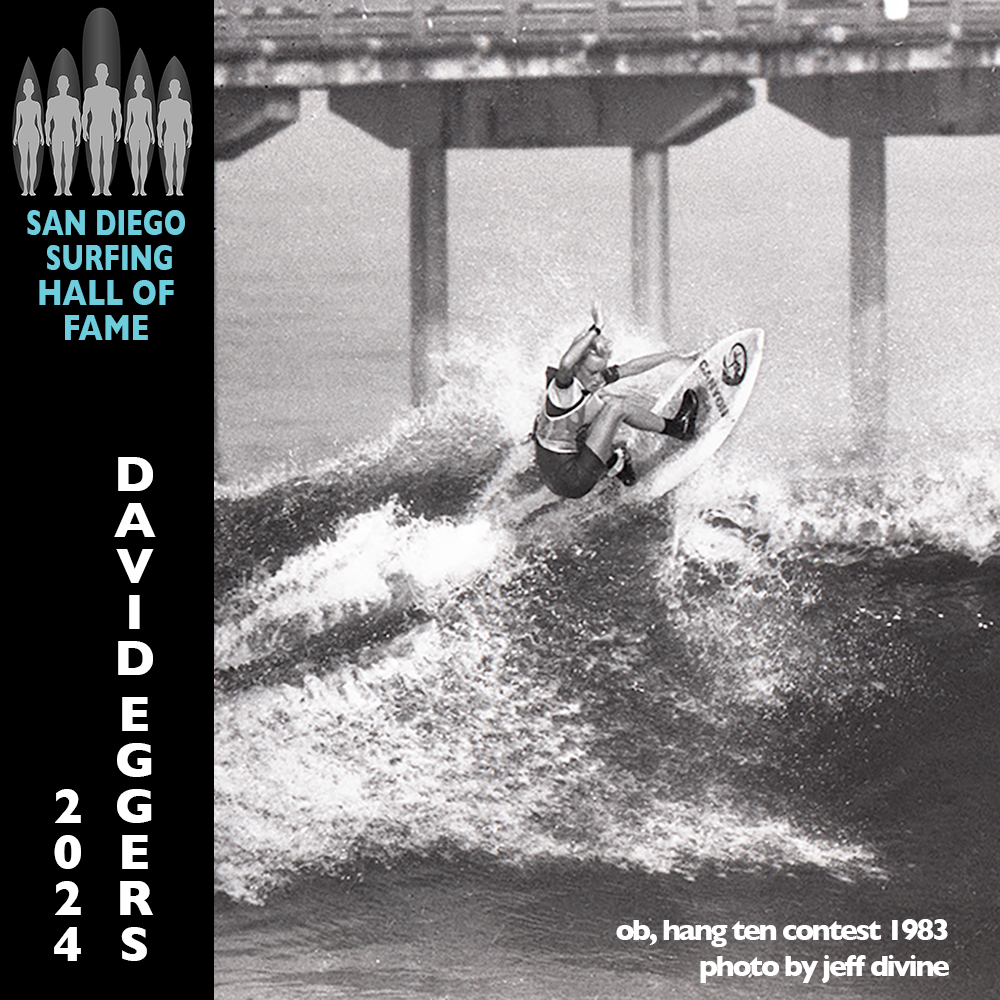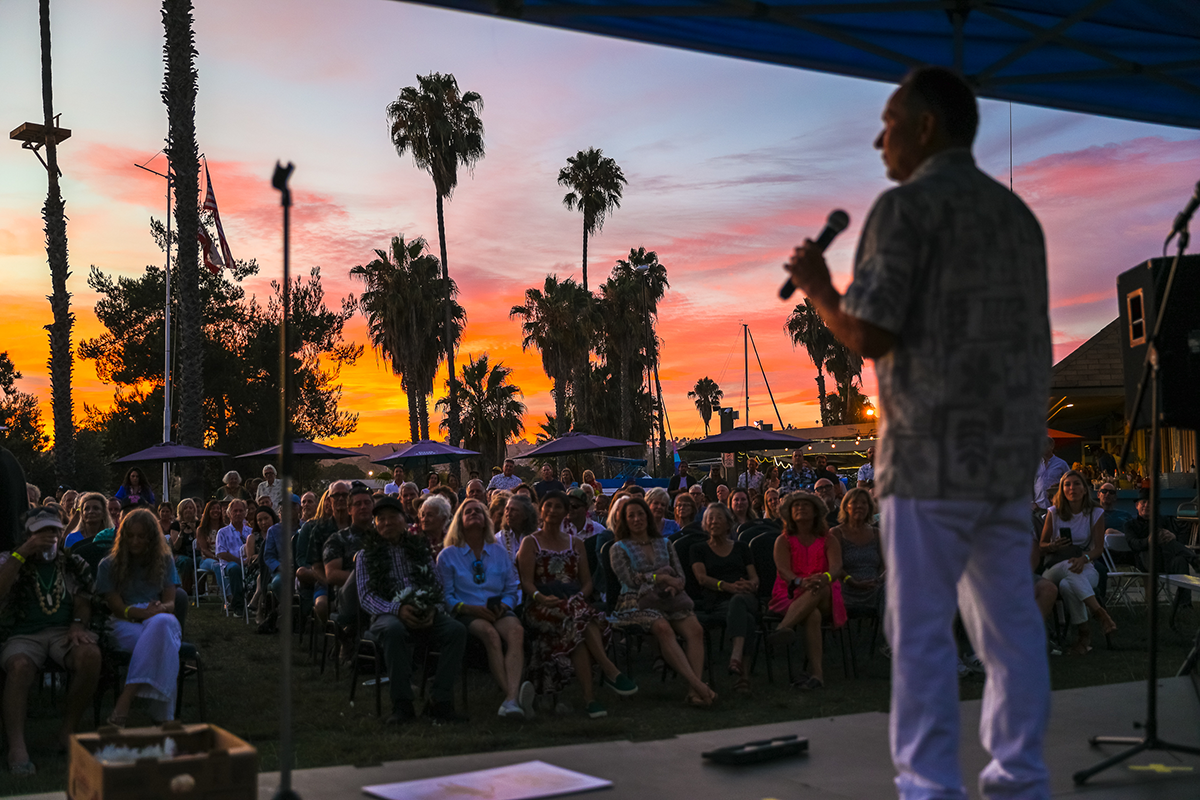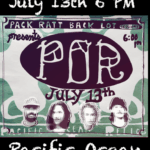The hallowed halls of the La Jolla Historical Society, currently echoing with the vibrant energy of “La Jolla Surf: Culture, Art & Craft” played host to a unique convergence of surfing history on the afternoon of April 24th. Against the backdrop of vintage surfboards and evocative imagery curated by lifelong surfer and professional photographer John Durant, another luminary of the surf world took center stage: the esteemed photographer and former photo editor of Surfer Magazine, Surfing, and The Surfer’s Journal, Jeff Divine. In a special interview led by Durant, the secrets, anecdotes, and philosophies gleaned from Divine’s remarkable tenure at the helm of surfing’s most influential publications were revealed, offering a fascinating glimpse behind the glossy pages that shaped generations of wave riders.
For those familiar with the San Diego surf scene, the pairing of Durant and Divine held a particular resonance. Durant, a UC San Diego alumnus who transitioned his lifelong passion for surfing into a distinguished career in professional photography, videography, and journalism since 1978, possesses deep roots in the Southern California surf community. His lens has captured iconic moments for surfing giants like Rusty Surfboards, Gordon & Smith, Bing, Larry Mabile, and Dennis Murphy. Beyond his visual artistry, Durant is a respected voice in surf culture, having penned insightful articles for The Surfer’s Journal, the LA Times, and San Diego Magazine, often illuminating the compelling characters that define this unique world.
My own connection to John Durant underscores his integral role in the local surf landscape. He graciously photographed my collection of Canyon Surfboards, a testament to his dedication to preserving and showcasing surfing history. During these sessions, he shared captivating stories of his collaborations with the legendary shaper Rusty Preisendorfer, offering a personal window into the evolution of surfboard design and the personalities behind it.
Further, when I recently sought archival imagery for the San Diego Surfing Hall of Fame induction of David Eggers, Jeff Divine’s prompt and generous response, providing an iconic shot of David soaring at an 1980s Stubbies Ocean Beach contest, highlighted his enduring commitment to the sport and its history.

Jeff Divine, a La Jolla native born in 1950, embarked on his photographic journey into the surfing world in 1966. While his parents might have envisioned a more conventional career path, a serendipitous compliment on a local photograph published by the young Divine, offered by a friend of his father at the prestigious La Jolla Golf and Tennis Club, acted as a pivotal moment, swinging open the aperture to his destined career in surf photography. From that point forward, Divine’s eye for capturing the raw beauty and visceral energy of the ocean, coupled with his innate understanding of surf culture, propelled him to the forefront of the genre.
One of Divine’s remarkable talents lies in his almost preternatural sense of place, an ability to recognize and immortalize those fleeting moments when natural elements converge to create scenes of breathtaking wonder. He spoke with Durant about the legendary convergence at Windansea beach, where the precise alignment of tide, swell, and reef can generate explosive eruptions of water, transforming the familiar break into a spectacle of untamed oceanic power. It’s this sensitivity to the dramatic interplay of nature that permeates his iconic imagery.
Throughout the interview, Durant skillfully guided Divine through his illustrious career, prompting him to share insights and “hidden secrets” gleaned from his decades spent shaping the visual narrative of surfing. One such revelation concerned the seemingly mundane practice of using car wax on camera housings. Divine explained how this unexpected technique could create dazzling glimmers and reflections when shooting both above and below the waterline, adding an ethereal quality to his ocean perspectives. This practical, hands-on tip offered a tangible example of the ingenuity and resourcefulness often required in the demanding field of surf photography.
Beyond technical tricks, Divine emphasized the artistic and emotional connection at the heart of compelling surf imagery. He encouraged aspiring photographers to follow the aesthetic curvature of a wave from its initial formation all the way down the line to the surfer’s interaction, urging them to capture not just the action, but the feeling, the emotion, the visceral response that the wave itself evokes. This focus on capturing the essence of the surfing experience, rather than simply documenting the event, speaks to the depth and artistry that defines Divine’s work.
Intriguingly, Divine also touched upon the power of “mind surfing,” encouraging everyone, not just photographers, to visit the beach and mentally envision their perfect wave, their ideal ride. This practice, he suggested, could deepen one’s connection to the ocean and enhance their appreciation for the subtle nuances of wave movement. It’s a testament to the profound and almost meditative relationship that surfers often develop with the ocean.
Divine’s career trajectory saw him hold influential positions as photo editor for a combined 35 years across the three pillars of surf media: Surfer Magazine, Surfer’s Journal, and the now-defunct Surfing magazine. In these roles, he wasn’t just curating images; he was shaping the visual language of surfing, influencing the aesthetic sensibilities of generations of surfers and photographers alike. His discerning eye and commitment to quality elevated the standard of surf photography, showcasing the raw power, graceful athleticism, and breathtaking beauty of the sport and its surrounding culture. His work has transcended the pages of magazines, finding its place in museums and galleries worldwide, as well as numerous influential books and media productions. His significant and enduring contribution to surf culture was formally inducted into the San Diego Surfing Hall of Fame, a fitting tribute to a career spanning five decades.
Divine’s lens has taken him to the very vanguard of violent ocean energy, capturing iconic waves and legendary riders in their element. He recounted tales of venturing to Pipeline on the North Shore of Oahu, a wave synonymous with power and danger, returning with images that have become ingrained in the collective consciousness of the surfing world. His photographic journey began much closer to home, on the craggy Torrey Pines cliffs overlooking the legendary break at Blacks Beach, a location known for its powerful surf and dramatic backdrop.
Interestingly, Divine’s photographic trajectory wasn’t solely confined to the raw energy of remote surf breaks. His keen eye and professional acumen also led him to capture portraits of the world’s wealthiest individuals aboard their private fleets of ships, a stark contrast to the gritty authenticity of the surf world, yet further demonstrating his versatility and talent behind the lens.
As a magazine photo editor, Divine was often the “man on the ground,” visiting the world’s most local and sometimes fiercely guarded surf breaks. Durant, a towering figure himself at 6’4″, jokingly alluded to Divine’s unflappability in such situations. Divine shared anecdotes of navigating the often-territorial nature of localism, even offering a cautionary note about aggravated locals in places like Ventura, California.
In a lighter vein, Divine recounted the inherent “Aloha Tendencies” of the Hawaiian surf community. He shared a memorable story of being the sole photographer on a secluded beach, filming a handful of surfers, when a large group of imposing Hawaiian men arrived. Initially, he admitted to a moment of apprehension. However, a friendly greeter quickly put him at ease, explaining that they were simply curious about his camera and wanted to “hang out.” The afternoon unfolded in a spirit of camaraderie, with beers shared and the melodic strumming of ukuleles filling the tropical air, a heartwarming welcome to the wayward boy from La Jolla.
Divine also noted a recurring dynamic he often observed when visiting local surf breaks: the presence of a single, often rough-around-the-edges individual who was well-known to the rest of the surfing cohort, and whose behavior tended towards the overly assertive. These observations, peppered throughout his conversation with Durant, offered a candid and often humorous glimpse into the social dynamics that exist within the diverse and sometimes complex world of surfing.
The interview at the La Jolla Historical Society, orchestrated by John Durant, served as a vital opportunity to delve into the rich history and often unseen processes behind the creation of iconic surf imagery. Durant’s intimate knowledge of both photography and surf culture allowed him to draw out nuanced insights from Divine, revealing not just technical details but also the philosophical underpinnings that guided his influential career. For attendees, it was a rare chance to hear firsthand accounts from a figure who shaped the visual identity of surfing for decades, offering a deeper appreciation for the art and craft that lies behind the breathtaking moments captured on film. As the “La Jolla Surf: Culture, Art & Craft” exhibition continues its run, this insightful conversation will undoubtedly serve as another compelling layer to the rich tapestry of surfing history being celebrated within the La Jolla community.







